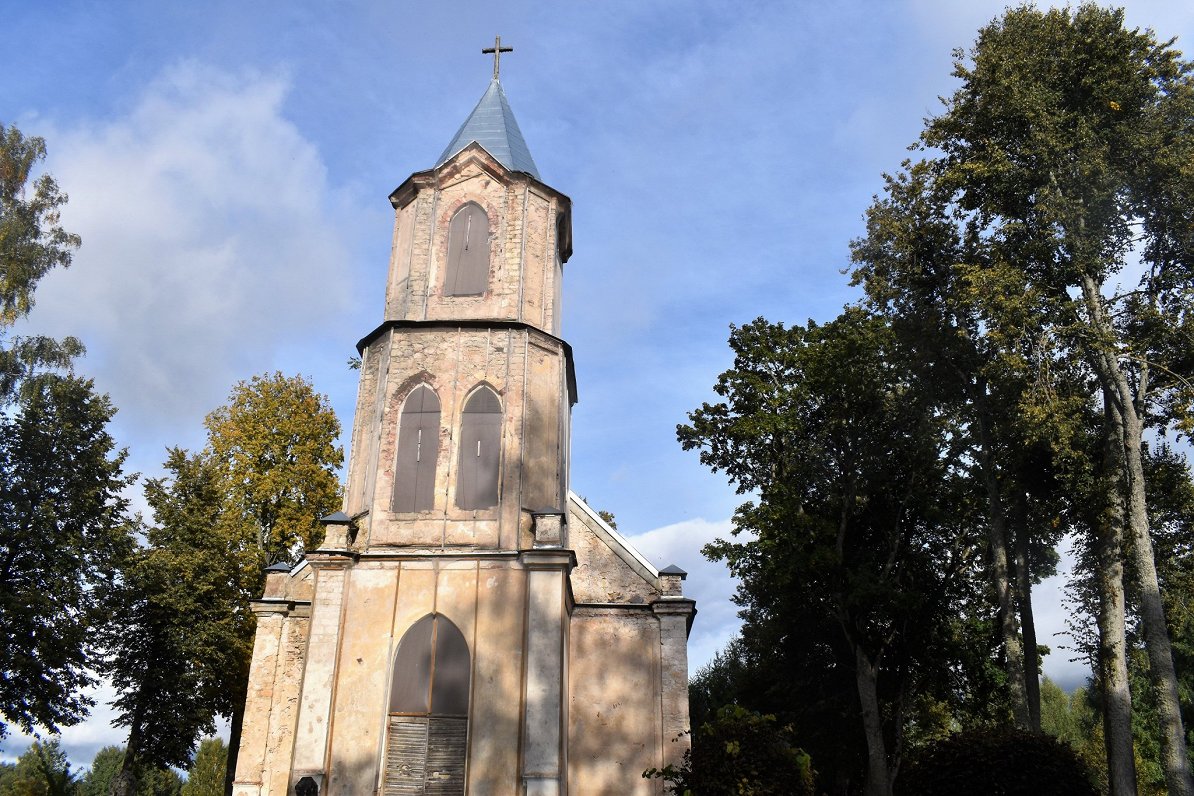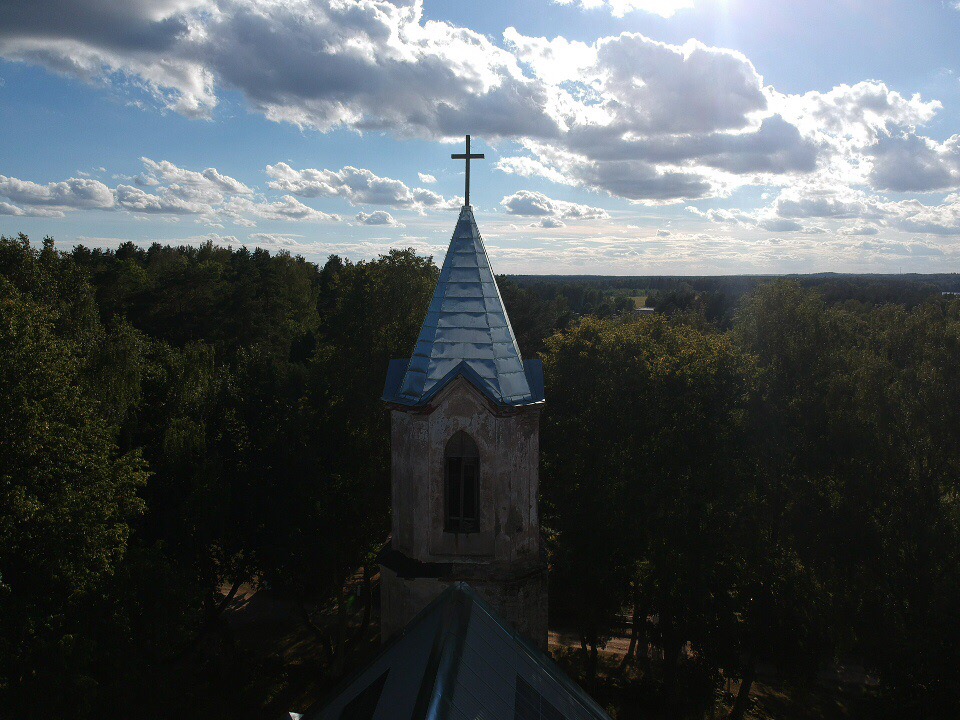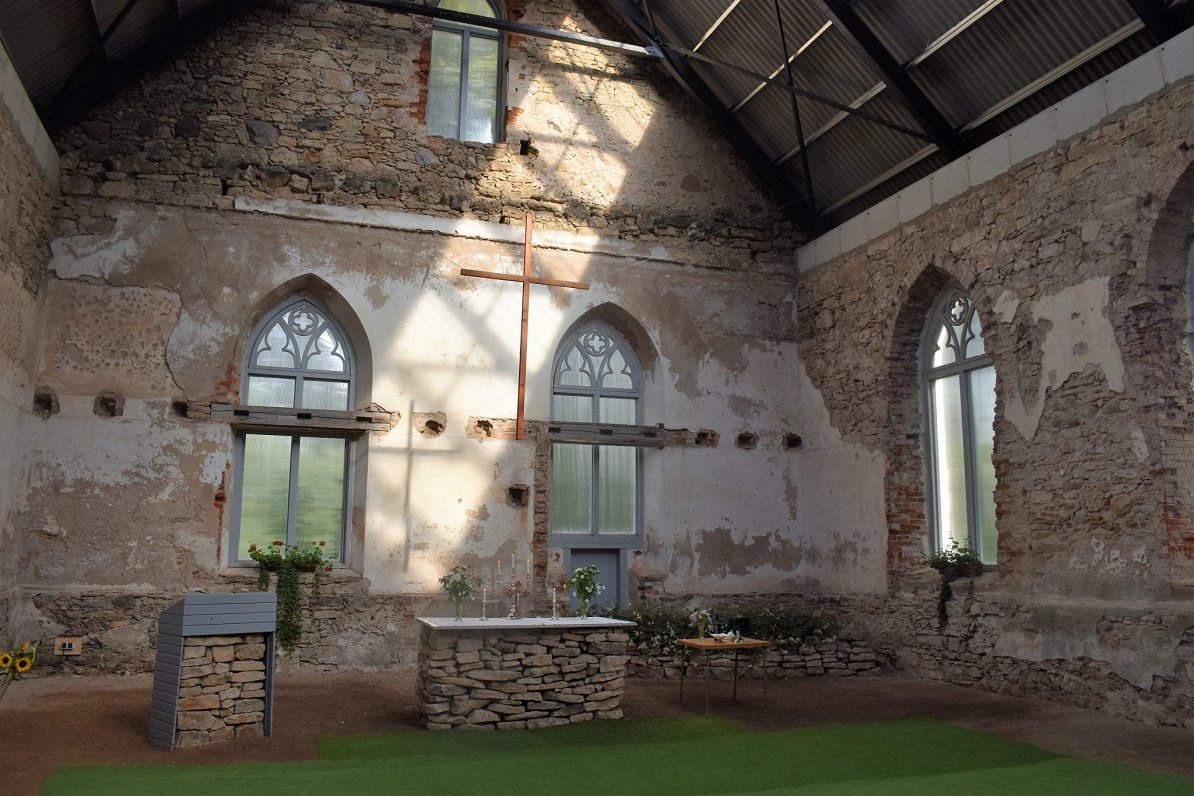Historic records show there has been a church in this picturesque village, 135 kilometers south-east of Riga, since the mid-16th century. But in 1626, when Sēlpils Castle hosted peace talks between the warring Swedes and Poles, the entire village was burned down for its trouble, including the church.
Its replacement was alas blown up by the Swedes in 1705 during the Great Northern War against the Russians. After the area recovered from the plague, another church was opened in 1793, but in 1816, it too burned down after the nearby tavern caught alight and the fire spread.
The current masonry church was unveiled in 1850, but it was badly damaged by Soviet artillery during the Second World War. Afterwards, efforts by locals to repair it were blocked by the Communist authorities and the building fell into ruin.
The crumbling walls became an increasing eyesore, especially as the surrounding area was smartened up in the early 2000s. A bay of the Daugava River a few hundred meters away was turned into a pretty park, complimenting the local cemetery, a popular destination for Latvians as anyone familiar with their pagan mentality will know.

So, in 2006, members of the congregation, reinstated in 1998, decided to begin restoration. Instead of recreating the entire structure, a very costly undertaking, they secured 30,000 euros from European funds for a delightful compromise.
A lightweight roof was installed over the old walls, with perspex panels to let in natural light. Doors and windows were put in, but it was decided to never lock up, thus attracting sightseers and devotees at all hours.
According to Ligita Aišme, head of the congregation of 30 members, this policy has never caused any trouble. Indeed, the donations left by visitors will come in handy for the next stage of renovations – reinforcing the walls, which are crumbling in places, and making the church tower inhabitable.
When Covid restrictions were in force, day trippers from all over Latvia made a beeline to the church, which was regarded as an outdoor space. And this summer three weddings and several Christenings were held there.
“People today want something special, and everyone who comes here comments on the unique atmosphere,” says Ligita. “The centuries old stone glows with authenticity.”
Except for a strip of Astro turf, there is a dirt floor, and the natural setting is complimented by a few rock gardens. Scattered feathers indicate that birds feel right at home.
Sēlpils is served by a pastor from Aizkraukle, who makes the journey across the river every third Sunday of the month. About ten worshippers showed up for the September gathering. Lusty singing was accompanied by an electric synthesizer.

After the service, a trestle table was set up inside for the traditional tea and biscuits. The setting, so different from the cliched musty church basement, made for a jolly mood.
Services are only held here while it is warm enough, with worshippers making the trip to Aizkraukle in the winter months. Ligita hopes they will get one more gathering in October before the weather turns.
But a Christmas tree will be in place, and pilgrims from far and wide will be most welcome to pop in.
Need to know
There is no direct public transport to Sēlpils from Riga. It’s a 90-minute drive.
































